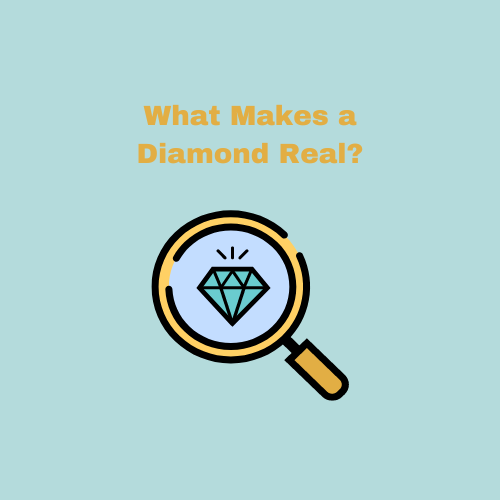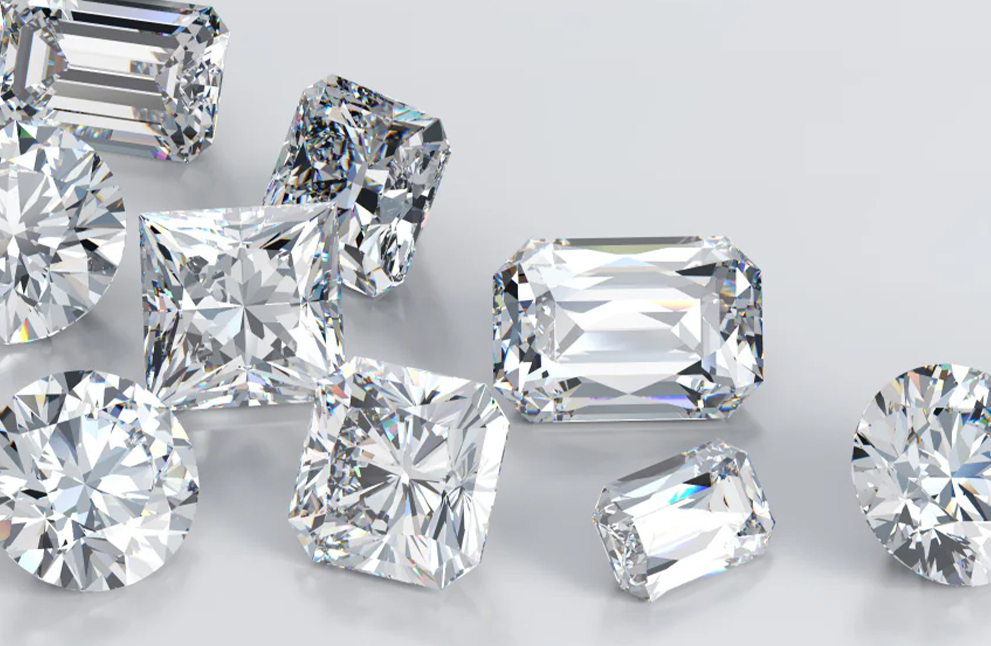Are Lab Grown Diamonds Real? Understanding the Controversy
Are lab grown diamonds real? It’s a question that has sparked curiosity, debate, and even controversy in the world of fine jewelry. As science and technology continue to push the boundaries of what’s possible, we find ourselves face-to-face with diamonds that didn’t form deep within the Earth, but rather in high-tech laboratories.
These man made marvels have left many wondering: Can something created by human hands truly be considered a “real” diamond? In this article, we’ll dive deep into the sparkling world of lab grown diamonds, exploring their nature, quality, and place in the jewelry market and your understanding of what makes a diamond “real.”
What Makes a Diamond Real? Definition of a “real” diamond

Traditionally, “real” diamonds were defined as those formed deep within the Earth over billions of years, created by intense heat and pressure. However, with the advent of lab grown diamonds, the definition of “real” has become more nuanced.
From a scientific perspective, a diamond’s realness is determined by its chemical composition and physical structure, not its origin. Both natural and Cultured diamonds are made of pure carbon atoms arranged in a specific crystalline structure called diamond cubic.
This arrangement gives diamonds their unique properties, including exceptional hardness, brilliance, and durability. Whether formed in the Earth’s mantle or a high-tech laboratory, if a stone has this precise atomic structure and composition, it is, by scientific definition, a real diamond. Both natural and lab diamonds are considered real diamonds, as they have the same chemical, physical, and optical properties. The Federal Trade Commission (FTC) recognized lab grown diamonds as real in 2018.
Are lab grown diamonds the same as real diamonds?
Are lab grown diamonds the same as real diamonds? The answer is a resounding yes. Despite their man-made origin, lab grown diamonds are chemically, physically, and optically identical to their natural counterparts.
The term “synthetic diamond” is often used interchangeably with “lab grown diamond,” but it’s important to understand that “synthetic” doesn’t mean fake or artificial in this context. A synthetic diamond is simply one that’s created in a laboratory setting rather than formed naturally on the Earth.
Strength and Sparkle

The strong shine and strength of a diamond come from its special crystal structure. A diamond has tightly packed carbon atoms, which create strong ties called covalent bonds. This makes diamonds very hard.
This great hardness, along with their optical properties, gives diamonds their unique brilliance, fire, and sparkle. This is why many people want diamonds as gemstones.
The hardness of lab grown diamonds
The hardness of a diamond, whether it is lab grown or natural, is measured on the Mohs scale. A diamond scores the highest at 10. A lab-grown diamond, like a natural diamond, scores the highest rating of 10 on the Mohs scale, indicating its superior hardness and durability. Lab diamonds are made using methods like High Pressure High Temperature (HPHT). These methods copy how diamonds form in nature, so they have the same strong hardness.
This strength makes lab created diamonds perfect for daily use, just like natural diamonds. They resist scratches from most materials, making them great for engagement rings or any jewelry that people wear every day.
The diamond industry recognizes the hardness of lab grown diamonds. This helps show that they are a strong and lasting choice compared to mined diamonds.
Optical properties and brilliance
Lab created diamonds shine just as brightly as natural diamonds. They have the same optical properties, which include brilliance, fire, and scintillation. Brilliance is how well the diamond reflects white light. Fire is how light splits into different colors. Scintillation is the sparkles you see when you move the diamond.
These properties depend on how the diamond is cut, how clear it is, and how it interacts with light. Since lab grown diamonds are made the same way as mined diamonds, they have the same stunning sparkle.
Their shine, along with being ethically sourced and good for the environment, is why more people are choosing Man made diamonds for engagement rings and fine jewelry.
Are lab grown diamonds as strong as real diamonds?
Yes, lab grown diamonds are just as strong as natural diamonds. Their strength comes from strong bonds between carbon atoms in their crystal structure. When they are made, whether by High Pressure High Temperature (HPHT), or Chemical Vapor Deposition (CVD), lab grown diamonds go through high-pressure conditions like natural diamonds. This is why they have the same strength.
The process usually starts with a tiny diamond seed that acts as a base. Carbon atoms attach to this seed in controlled conditions, mimicking how natural diamonds grow. This results in a stone with the same great strength.
So, when it comes to toughness and resistance to scratches or breaks, lab grown diamonds are just as reliable as mined diamonds. This makes them a great choice for jewelry that should last a lifetime.
Grading and Quality

The Gemological Institute of America (GIA) is one of the top experts on diamonds in the world. They use the same strict grading system for both lab grown and natural diamonds. This system is based on the 4Cs: carat, cut, color, and clarity.
Clarity grades show how many flaws or marks are in the diamond. By using a standard grading system, buyers can easily compare diamonds, no matter where they come from.
The 4Cs for lab grown diamonds
When you want to check the quality of a lab grown diamond, remember the 4Cs: carat, clarity, color, and cut. These are just as important as they are for natural diamonds.
- Carat: This is the weight of the diamond.
- Clarity: Clarity looks at any inclusions (internal flaws) or blemishes (surface marks) in the diamond.
- Color: Diamonds are graded from D, which is colorless, to Z, which has a light yellow or brown color.
- Cut: This shows how well a diamond is cut and shaped to give it a sparkle.
Comparison with natural diamonds
When you compare lab grown diamonds vs natural diamonds, remember this: both use the same grading system called the 4Cs. This means that a man made diamond with specific clarity, color, carat, and cut will shine just as bright as a natural diamond with the same grades but at a lower cost rate.
Lab diamonds typically cost less than natural diamonds with similar features. This lower price happens mainly because lab diamonds are cheaper to make and have ethical sourcing.
Are lab grown diamonds as good as real diamonds?
Determining if a lab diamond is “as good” as a natural diamond depends on what “good” means to you. If “good” means looking pretty, shining bright, and lasting long, then lab diamonds are just as good as natural diamonds.
Lab diamonds have the same chemical makeup, physical qualities, and optical properties as natural diamonds. They also follow the same tough grading rules. Their shine and sparkle cannot be told apart by the naked eye.
Value and Market Acceptance

Lab diamonds are becoming more accepted in the market. This is due to their ethical sourcing, care for the environment, availability, and lower prices than natural diamonds. However, many potential buyers still think about resale value.
Right now, the resale market for Cultured diamonds is still growing. As the market develops and people’s views change, it’s expected that resale values will become steadier. This can make Laboratory created diamonds a better long-term investment.
Factors Affecting lab grown diamond Prices
The price difference between lab grown and natural diamonds is mainly due to how they are made and what is happening in the market. Natural diamonds come from mining, which takes a lot of work and includes long supply chains. They are rare, and all of this makes them more expensive.
Lab diamonds are made in labs. This method is more efficient, making them cheaper to produce. There is no mining involved, and this avoids many ethical issues, so they cost less.
It is also good to remember that the value of man made diamonds depends on how many people want them, new production technology, and how people view these diamonds as a good option compared to mined ones.
Consumer perceptions and trends
Consumer views on lab grown diamonds are changing fast. What used to be seen with doubt is now accepted as a responsible, ethical, and cheaper choice compared to mined diamonds. Millennials and Gen Z are leading this change by focusing on sustainability, ethical sourcing, and honesty when they buy.
This change is clear in the jewelry business. Lab grown diamonds are now found more in engagement rings, earrings, and other high jewelry. Big stores and small designers are both adding Cultivated diamonds to their collections to meet the growing interest in these stones.
Are lab grown diamonds worth as much as real diamonds?
The value of a diamond is complex, no matter where it comes from. Right now, lab diamonds and natural diamonds of the same size and quality may not have the same resale value. However, this is less important for many buyers today. People are often more interested in ethical sourcing and sustainability.
When someone looks for a diamond engagement ring or any fine jewelry, the emotional connection and personal meaning tend to matter more than its price. Lab diamonds, which are sourced ethically and have less environmental impact, offer real value for many people.
FAQs:
Will lab diamonds pass the tester?
Yes, lab grown diamonds will pass standard diamond testers. Here’s a concise explanation:
– Lab diamonds will pass thermal and electrical conductivity tests.
– Standard testers identify them as real diamonds.
– These devices can’t differentiate between natural and lab grown diamonds.
– Only specialized equipment in gemological labs can reliably tell them apart.
Are lab grown diamonds considered fake?
No, lab diamonds are not fake. People may call them synthetic diamonds or artificial diamonds, but they are real. They have the same chemical makeup as natural diamonds. The Federal Trade Commission says that lab diamonds are real diamonds. They are different from diamond simulants like cubic zirconia, which are not made of carbon.

